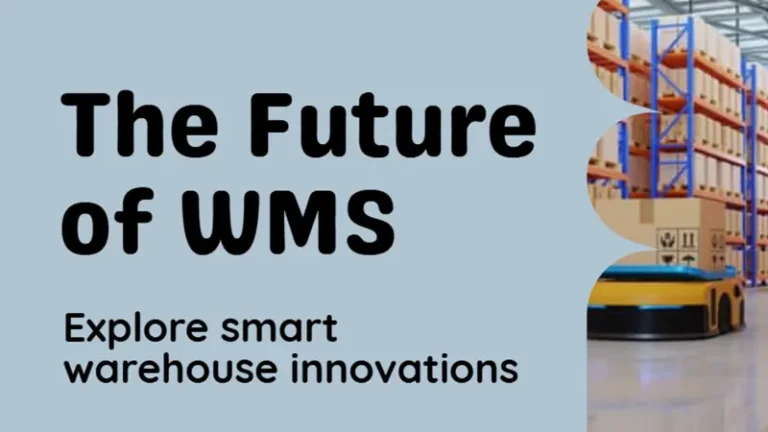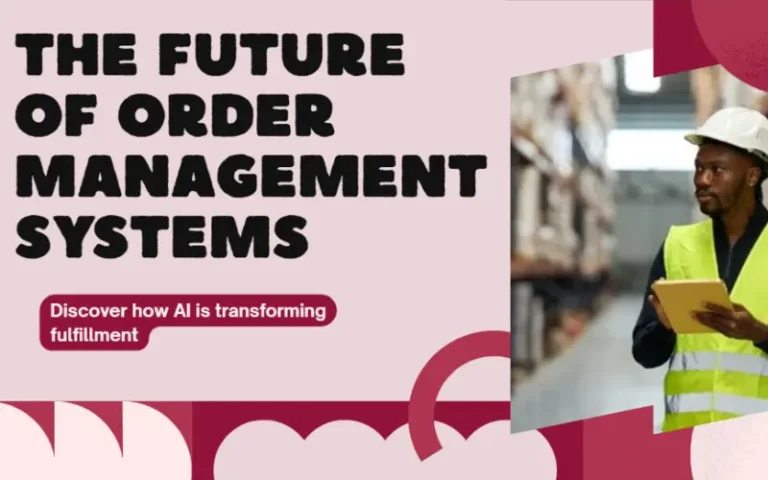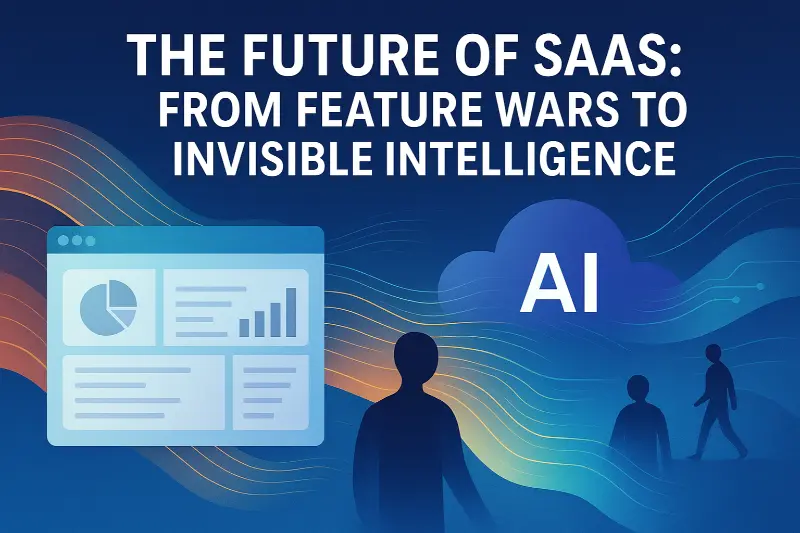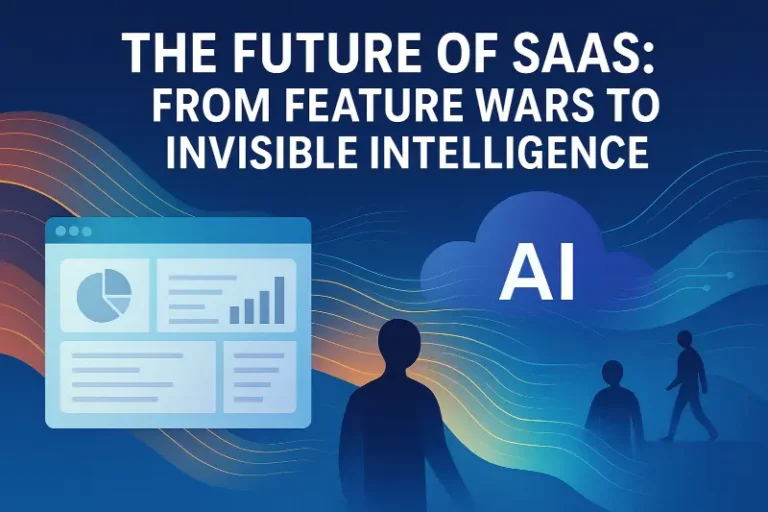SaaStr AI: ANNUAL x AI Summit 2026
May 12–14, 2026 | San Francisco, CA
Join Cahoot at SaaStr AI: ANNUAL x AI Summit — the world’s largest gathering of SaaS, AI, and Cloud innovators — where 10,000+ executives, founders, and VCs come together to push the limits of what’s possible in AI-powered B2B growth.
This 3-day summit delivers 200+ tactical sessions from world-class founders and rising leaders in AI and SaaS. Get exclusive insights into how today’s top companies are integrating AI into their workflows, scaling faster, and driving revenue more efficiently. Explore actionable strategies, avoid costly missteps, and meet the minds defining the future of intelligent software.
Whether you’re building, scaling, or investing in the next generation of B2B tech, this summit is your playbook for AI-powered success.
Reduced price admission for qualified attendees.
Cut Costs with the Smartest Shipping On the Market
Guranteed Savings on EVERY shipment with Cahoot's AI-powered rate shopping and humanless label generation. Even for your complex orders.
Cut Costs Today
Turn Returns Into New Revenue
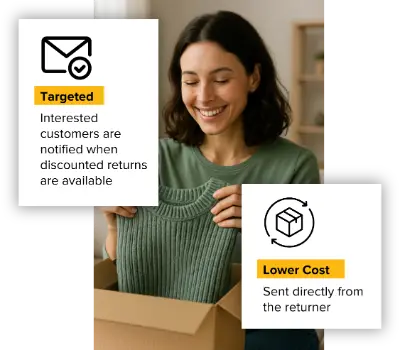
UglyTalk NYC – LEVERAGING AI TO OPTIMIZE ECOMMERCE LOGISTICS AND PROFITS
December 10, 2025 | New York, NY
Join Cahoot CEO Manish Chowdhary and a panel of Ecommerce founders and operators actively optimizing fulfillment, service, and analytics with AI and practitioners who turn complex stacks into simple playbooks using automation, AI, and clear metrics.
This session focuses on practical ways to increase speed, improve accuracy, and lower operating cost so you spend less time on busywork and more time on growth.
This Ugly Talk is all about the nitty-gritty: making the highest leverage improvements in the next seven and thirty days; avoiding common mistakes teams make while scaling; choosing the right tool for the job and avoiding tool sprawl, and practical AI workflows and prompts for order management, support, merchandising, and reporting.
Free admission. Seats are limited—register early.
ShipStation vs. Cahoot: 21x Faster, Real Results
Get the inside scoop on how a leading merchant switched from ShipStation to Cahoot—and what happened next. See it to believe it!
See the 21x Difference
Turn Returns Into New Revenue

The Future of SaaS: From Feature Wars to Invisible Intelligence
The SaaS world is changing faster than most of us realize. For years, software companies competed in feature wars, packing in dashboards, toggles, and modules like they were stocking a buffet. The SaaS model has historically dominated the software industry, driving the ongoing SaaS revolution that continues to transform how businesses operate. Now? Businesses don’t want more features. They want results. They’re done with juggling complex tools; they want outcomes, automation, and systems that just work.
At Cahoot, working with ecommerce brands every day, we see this shift up close. Retailers are tired of logging into five different apps to ship a single order or analyze a single metric. Unlike traditional software, which required on-premise installation and significant upfront investment, cloud-based SaaS has enabled scalable, accessible solutions delivered over the internet. They want software that solves problems quietly, without adding to their workload. This shift is not only changing how software is delivered, but is also reshaping the overall SaaS landscape and business model for software companies. That’s where SaaS is heading: from feature-heavy to invisible intelligence, AI-powered systems that deliver results in the background.
Slash Your Fulfillment Costs by Up to 30%
Cut shipping expenses by 30% and boost profit with Cahoot's AI-optimized fulfillment services and modern tech —no overheads and no humans required!
I'm Interested in Saving Time and MoneyFrom Features to Outcomes: SaaS Grows Up
The feature-first era was inevitable. Competition exploded, and SaaS providers fought to stand out by adding more and more. It worked for a while. But now, the market is saturated. Enterprise buyers face dozens of options for every function. Most use only a fraction of the tools they pay for. Current SaaS trends show that, to stay competitive, companies are evolving their pricing models, moving away from the traditional pricing model toward more flexible, outcome-based pricing models that better align with customer value. The question isn’t “Which software has the most features?” anymore; it’s “Which solution gets me the result with the least effort?”
This is the evolution of SaaS: from tools to services, from dashboards to deliverables. The best SaaS companies today measure success not by logins, but by outcomes, higher conversion rates, lower churn, and faster operations. Reducing customer churn and improving customer retention are now key business outcomes for SaaS companies, and innovative revenue models are being adopted to support these goals. And the ones that can’t prove that? They’ll lose.
Recent research backs this up: 90% of enterprise buyers expect AI-driven functionality in their SaaS tools, and AI-enhanced products are growing revenue 10% faster than their traditional counterparts. As revenue growth rates slow across the industry, new pricing models and revenue models are directly impacting business outcomes and helping companies maintain a competitive edge. In short, outcome-driven SaaS isn’t a trend; it’s table stakes.
The Rise of AI-Driven, Invisible Software
We’re entering the age of “zero UI”, or more accurately, invisible UI. Instead of training employees to master endless dashboards, AI agents handle the work and surface only what matters. Artificial intelligence, with its advanced AI capabilities and sophisticated AI models, is the driving force behind this transformation, enabling software to operate autonomously and intelligently.
Picture an ecommerce ops manager today: they log into a shipping app, check carrier rates, process orders, and handle exceptions. In tomorrow’s SaaS world, they don’t log in at all. The system automatically selects the best carriers, schedules pickups, and sends alerts only if something goes wrong. The software is invisible, but the results are very visible: lower costs, on-time deliveries, happier customers. In this future, AI tools and AI-driven solutions will automate processes (and automate workflows), leveraging machine learning to generate insights and streamline software development for even greater efficiency.
This shift is already happening. AI copilots are appearing in everything from CRMs to project management tools, and they’re evolving into full AI agents capable of executing tasks autonomously. It’s a tech revolution. And it’s going to redefine what “software” even means. The rise of no-code platforms is also democratizing software development in the SaaS industry, empowering more users to build and automate workflows without traditional programming.
Looking for a New 3PL? Start with this Free RFP Template
Cut weeks off your selection process. Avoid pitfalls. Get the only 3PL RFP checklist built for ecommerce brands, absolutely free.
Get My Free 3PL RFPTrust, Transparency, and Control
With invisible intelligence comes a new challenge: trust. If software is making decisions behind the scenes, approving refunds, reallocating inventory, users need confidence that it’s doing the right thing. Security concerns are paramount, as risks such as data breaches highlight the need to protect sensitive data (e.g., customer data) from unauthorized access and cyber threats.
The future belongs to SaaS platforms that balance automation with transparency. That means:
- Providing simple, plain-language explanations for AI-driven actions (“Shifted 200 units to avoid stockout based on forecasted demand”).
- Allowing selective oversight, logs, override options, and compliance safeguards.
- Ensuring data security and bias mitigation to build long-term trust.
- Implementing robust network security and secure cloud infrastructure to safeguard business data and maintain compliance.
In ecommerce and logistics, this is critical. Brands will only rely on AI to run fulfillment or manage customer interactions if they can see that the system is accurate, secure, and aligned with their goals.
Vertical SaaS: Smarter by Design
The shift to invisible, outcome-first SaaS is accelerating the rise of vertical SaaS, industry-specific platforms that deliver deep, tailored value. Generic tools can’t match the precision of a solution built for your exact challenges, especially when AI is layered in. Vertical SaaS solutions leverage business intelligence, data intelligence, and cloud-based solutions to address specific customer needs, enabling organizations to operate more efficiently and make smarter decisions.
We’re already seeing vertical SaaS leaders in ecommerce fulfillment, healthcare, and finance outperform broad, horizontal platforms. Why? Because domain-specific AI can optimize in ways generic software can’t. Cloud computing, customer experience, and customer engagement are central to these advancements, ensuring that SaaS solutions deliver maximum value through seamless integration and real-time responsiveness. For example, an AI-driven shipping platform can anticipate carrier rate changes, reroute shipments preemptively, and minimize costs automatically. That’s the kind of invisible intelligence ecommerce brands are asking for, and the kind Cahoot is building into our own solutions. Customer relationship management and creating exceptional customer experiences are now essential for vertical SaaS providers to drive loyalty and long-term growth.
Too Many Tools? AI Could Be the Fix
Ironically, while SaaS aims to simplify, businesses have never had more tools. Many manage dozens, sometimes hundreds, of separate applications. This leads to data silos, wasted spend, and operational drag. The complexity of managing diverse tech stacks and fragmented SaaS applications creates additional challenges for organizations seeking streamlined workflows and effective digital transformation.
AI could be the unifier. Instead of humans stitching everything together, intelligent agents will coordinate across multiple systems, pulling data, triggering actions, and delivering outcomes seamlessly. APIs will become the backbone; AI will be the brain. This integration not only improves operational efficiency but also supports business success by enabling proactive management and better customer outcomes. For ecommerce, that might mean one integrated solution managing orders, inventory, shipping, and returns with minimal human touch, replacing a patchwork of disconnected apps.
As the SaaS landscape evolves, business models of SaaS vendors are shifting, with the rise of micro SaaS targeting niche needs and impacting both public SaaS companies and broader SaaS businesses.
The Road Ahead: Adapt or Fall Behind
SaaS isn’t disappearing. It’s becoming something more powerful and more invisible. The winners will be those who combine AI’s adaptability with SaaS’s reliability, delivering measurable results without adding complexity. This reflects an ongoing paradigm shift in the SaaS market, where AI-driven solutions and innovative SaaS products are redefining how organizations operate and deliver maximum value.
For businesses, the takeaway is clear: start evaluating your tools not by how many features they have, but by how little work they leave for you. Leverage business data to drive better business outcomes, as highlighted in recent market research from Fortune Business Insights. Pilot AI-driven capabilities. Demand transparency and vertical expertise. And prepare for a world where software works quietly in the background, letting you focus on strategy, not screens.
Looking ahead, the growing importance of sustainable practices and achieving net-zero residual emissions will play a key role in shaping the future of SaaS.
Frequently Asked Questions
What Is “Invisible” SaaS and Why Does It Matter?
Invisible SaaS refers to AI-powered software that operates in the background, handling tasks automatically and surfacing only results. It matters because it reduces complexity and improves outcomes without adding to users’ workloads.
Will AI Replace Traditional SaaS Platforms?
Not entirely. AI will augment and automate many SaaS functions, but core platforms will remain as secure, reliable backbones. The future is AI-enhanced SaaS, not AI-only.
How Can Ecommerce Brands Prepare for This Shift?
Audit where you’re spending time on manual processes, test AI-enabled features from your current providers, and focus on tools that demonstrate real, measurable results.
Why Is Vertical SaaS Becoming More Important?
Industry-specific solutions with embedded AI can deliver better outcomes than generic platforms by leveraging domain expertise and tailored automation.
What Risks Should Businesses Watch in AI-Driven SaaS?
Watch for data security, transparency, and potential bias in AI decisions. Choose vendors with clear safeguards, compliance certifications, and explainable AI practices.

Turn Returns Into New Revenue

UglyTalk NYC
August 20, 2025 | New York, NY
Building Profitable eCommerce in a Downward Market Join Cahoot CEO Manish Chowdhary and a panel of bold ecommerce operators for a no-fluff conversation on what’s actually working in 2025.
This Ugly Talk is all about honesty: real numbers, real failures, and what it takes to thrive when growth isn’t easy. Whether you’re VC-backed or bootstrapped, DTC or multichannel—this event is for founders who are still standing and still pushing. Free admission. Seats are limited—register early.
Slash Your Fulfillment Costs by Up to 30%
Cut shipping expenses by 30% and boost profit with Cahoot's AI-optimized fulfillment services and modern tech —no overheads and no humans required!
I'm Interested in Saving Time and Money
Turn Returns Into New Revenue

Stripe Sessions: The Internet Economy Conference
May 6-8, 2025 | Moscone West | San Francisco, CA
Stripe Sessions brings together the payments and financial technology community to share ideas that drive progress.
Join us in San Francisco for talks on moving your business forward, opportunities to network with fellow leaders, and the first look at major upcoming product releases in the Stripe ecosystem—all designed to grow your revenue.
Slash Your Fulfillment Costs by Up to 30%
Cut shipping expenses by 30% and boost profit with Cahoot's AI-optimized fulfillment services and modern tech —no overheads and no humans required!
I'm Interested in Saving Time and Money
Turn Returns Into New Revenue

Ugly Talk: The Growth Blueprint
February 12, 2025 | New York, NY
This panel will explore the biggest surprises and defining moments of 2024, highlighting strategies that drove brand performance and lessons from missed opportunities. Looking ahead, experts will discuss shifting consumer trends, the blend of in-store and online shopping, and the future of influencer marketing.
The conversation will also examine the potential of AI tools like Shopify Magic and their role in product development and business growth. Finally, panelists will share insights on emerging design trends and investment strategies for 2025.
Slash Your Fulfillment Costs by Up to 30%
Cut shipping expenses by 30% and boost profit with Cahoot's AI-optimized fulfillment services and modern tech —no overheads and no humans required!
I'm Interested in Saving Time and Money
Turn Returns Into New Revenue

How AI Agents Will Make Webstores Vanish Forever
Online Stores (Webstores) Are About To Disappear Forever
Artificial Intelligence (AI) Agents are going to transform business across every sector, and e-commerce will be one of the industries that changes the most because every online shopper will have their own AI agent that fetches products, and brings the products to them, displaying the products and details in a format that they like, not that the retailer chooses for them. Any stores; all stores. So, there’s no real need for a store anymore. Product data feeds have existed for a long time. AI agents can ingest data feeds and serve the results in a clear and easy-to-understand display, designed by YOU. They can automatically filter the results, present the best options, and then place the orders.
Why should you have to start with a search, then browse an online catalog, read all the reviews (while having to determine which ones can be trusted), and click back and forth through styles across as many websites as you have the time to spend?
AI agents are intelligent systems that understand language and are able to perceive, analyze, and act upon complex data and/or workflows. “Act” is the key word. AI Agents take autonomous action on your behalf to complete the task or achieve the desired outcome. Need a pack of white undershirts? Feed the requirements into the agent using natural language and pick from the results that used YOUR search criteria, YOUR size, YOUR gender; not the results determined by Google or Amazon using algorithms and rankings nobody understands.
Slash Your Fulfillment Costs by Up to 30%
Cut shipping expenses by 30% and boost profit with Cahoot's AI-optimized fulfillment services and modern tech —no overheads and no humans required!
I'm Interested in Saving Time and MoneyNow that may be a provocative thought experiment, but it will happen, it’s only a matter of when. But, retailers and brands will always need an Order and Inventory Management System because there needs to be a central repository for all the master product catalog data, customer data, all the transactions such as orders, returns, and cancellations, the need to capture (or receive) payments, track inventory and keep channel listings up-to-date, the ability to analyze all the data from all the sales channels and make business decisions accordingly. So an OMS/IMS is the central nervous system for all the critical business data. And now these SaaS platforms are being supercharged with AI agents to perform tasks and generate insights with unprecedented speed and accuracy. Let’s take a look at some examples:
- Best-in-Class Inventory Management and Procurement
Modern Order and Inventory Management Systems (OMS/IMS) predict demand with remarkable accuracy by using AI agents to analyze tens of millions of data points from historical sales data, supply chain status, seasonality, market trends, and more, to make intelligent, real-time forecasts for demand. AI agents can then automatically create Purchase Orders with vendors taking into consideration things like minimum order quantity, vendor lead time, and estimated transit days including current port congestion forecasts. And the best part is that it’s all based on natural language processing so if you can explain it, an AI agent can do it. - Remove Waste from Fulfillment Workflows
Humans are typically responsible for fulfillment operations (pick, pack, and ship), but traditional workflows are notoriously error-prone and cost the company tens of thousands of dollars that could otherwise be saved by using modern AI-enabled shipping software which removes the human from all (bad) decision-making and creates the optimal pick tours in the warehouse and then creates the cheapest shipping label using the smallest box or mailer that will deliver the order safely and on time. - Optimize (or Better Yet, Eliminate) Reverse Logistics
AI agents can predict potential returns and optimize the reverse logistics process by identifying items likely to be returned and streamlining the return handling procedures and communications. Further, they can proactively notify Sellers and customers about the likelihood of a return before the order is shipped (which is critical for the highest return rate categories such as women’s apparel). Groundbreaking new returns technologies such as the Cahoot AI-enabled Peer-to-Peer Returns Solution are already eliminating returns by enabling the return to be shipped directly to the next customer, which is cheaper, faster, and better for the planet. By eliminating one leg of shipping, eliminating warehouse processing, the returned item is sold faster, and the econ-conscious program enhances brand reputation. - Drive Business Outcomes with Advanced Analytics
AI agents can analyze enormous amounts of data quickly, and all of it, not just the headline data points like sales and returns. AI can identify more trends and answer more questions than retailers can even think of asking. For example, AI agents can identify anomalies in sales patterns, inventory levels, or customer behavior, alerting businesses to potential issues and enabling timely intervention. Another example: Sellers can evaluate supplier performance at a micro-level comparing negotiated agreements and SLAs to actual performance and use the data to negotiate better terms on their behalf, all while humans are working on growing the business.
Looking for a New 3PL? Start with this Free RFP Template
Cut weeks off your selection process. Avoid pitfalls. Get the only 3PL RFP checklist built for ecommerce brands, absolutely free.
Get My Free 3PL RFPSummary
Online stores (webstores) may be about to disappear forever, but Order and Inventory Management Systems are getting the long-awaited boost that they needed. Artificial Intelligence (AI) agents are set to revolutionize e-commerce by acting autonomously to streamline workflows across inventory management, order fulfillment, and reverse logistics, among other things, and it’s the OMS/IMS that’s leveraging this new technology to do it. By integrating Order and Inventory Management functions with real-time/real-world news and events, AI agents predict demand with precision and automate procurement decisions and actions. By leveraging modern fulfillment and reverse logistics solutions to automate rote but essential work, workflows are optimized and errors and operational costs are reduced. Lastly, AI agents are capable of exceptionally sophisticated analysis of OMS/IMS data that helps to identify actionable insights from untapped corners of the database to drive unprecedented profitability and success.

Turn Returns Into New Revenue

Top Holiday 2024 Consumer Shopping Trends
The 2024 holiday shopping landscape presents a complex picture of consumer behavior marked by notable contrasts across different shopper demographics. Despite economic uncertainties, holiday spending is reaching record levels, with consumers prioritizing family gifts while adapting their shopping strategies to navigate financial pressures.
We’ve scoured the top 2024 Holiday Shopping Surveys and predictions and summarized the research to help retailers gain insights into consumer spending, purchase intentions, and buying behaviors.
Economic Considerations and Budget Management
Many consumers will start holiday shopping earlier than usual to spread their budget, avoid crowds, and take advantage of early promotions. Despite this early start, many shoppers still expect to complete their purchases in December.
Consumer spending patterns reveal a significant divide between different groups. While some shoppers are reducing their holiday expenditures due to economic concerns, others are substantially increasing spending, reflecting growing economic disparities in the market. To prioritize their holiday budgets, many consumers make trade-offs by cutting back on other expenses like dining out and entertainment.
Free shipping and discounts remain the strongest motivators for purchases, while retailers’ reliability in meeting date-certain shipping promises continues to impact consumer loyalty significantly. Despite economic pressures, consumers can still be enticed to make impulse purchases with the right incentives.
Role of Digital Channels
Digital channels dominate holiday shopping, with most consumers discovering deals through online sources, social media, and e-commerce sites. Black Friday and Cyber Monday maintain their appeal, and home delivery remains the preferred fulfillment method for online purchases. Still, alternatives like in-store pickup are gaining popularity, especially among younger generations.
Generation Z has emerged as a particularly influential force in holiday shopping, demonstrating distinct preferences and behaviors. Their approach is predominantly digital-first, embracing self-checkout technology, mobile payments, and branded apps. This generation is heavily influenced by social media and digital content, with celebrity and influencer endorsements significantly impacting purchase decisions. They’re also unique in allocating more of their budget to self-gifting than other generations.
Slash Your Fulfillment Costs by Up to 30%
Cut shipping expenses by 30% and boost profit with Cahoot's AI-optimized fulfillment services and modern tech —no overheads and no humans required!
I'm Interested in Saving Time and MoneyPhysical Stores and Technology Integration
Physical retail plays a vital role in holiday shopping, with frequent in-store shoppers typically spending more overall. Stores attract customers through holiday displays, seasonal atmosphere, and exclusive products. Retailers are responding by integrating more technology into their physical spaces, creating a hybrid shopping experience that combines traditional and digital elements.
Gender-Based Spending Patterns
Gender-based shopping patterns show interesting shifts, with male shoppers leading in spending, particularly in categories like footwear (for themselves), electronics, and video games. Men are also showing greater enthusiasm for holiday travel and tech-enhanced shopping experiences.
Popular Gift Choices
Key product categories driving holiday sales include toys and books, video games, electronics, and personal care items, with gift cards maintaining their position as the most requested item. However, there’s surprisingly low interest in AI-powered gadgets, though millennials show the most enthusiasm for these products.
Travel Trends
Travel remains a significant component of holiday plans, though there’s a trend toward staying with friends and family, especially among cost-conscious travelers and baby boomers. Those who travel during the holidays tend to be bigger spenders across all categories, including gifts and entertainment.
Multi-Channel Shopping Journey and Sustainability
The holiday shopping journey has become increasingly complex and multi-channeled. Consumers typically begin with in-store experiences and word-of-mouth for product discovery, then move to online channels for research and comparison shopping. Thus, brands and retailers must have superior technologies such as order management and inventory systems. Different generations show distinct preferences throughout this journey, with baby boomers favoring in-store shopping and prioritizing convenience. In contrast, younger generations embrace mobile apps and show more interest in sustainable shopping and experiential gifts. All consumer groups’ priorities have shifted notably toward sustainability, with many shoppers willing to choose slower delivery methods to reduce their carbon footprint. They prefer brands demonstrating environmental commitment, though price sensitivity remains critical in decision-making.
Looking for a New 3PL? Start with this Free RFP Template
Cut weeks off your selection process. Avoid pitfalls. Get the only 3PL RFP checklist built for ecommerce brands, absolutely free.
Get My Free 3PL RFPInfluence of Generative AI
Marketing strategies are evolving, with traditional promotional tools like email newsletters having less impact than direct discounts and shipping offers. Generative AI is emerging as a valuable tool in enhancing the shopping experience, particularly among younger generations who find AI-driven recommendations helpful for making purchase decisions.
Summary
For retailers and marketers, the 2024 holiday season presents opportunities and challenges. Success depends on offering value, personalization, and memorable experiences across physical and digital channels while remaining sensitive to economic pressures affecting many consumers. The emphasis on tech integration, the growing importance of omnichannel experiences, and the increasing influence of younger generations will likely continue shaping retail behavior and customer loyalty. For brands that can successfully balance innovation with tradition while meeting diverse consumer needs and master ecommerce order fulfillment, this holiday season promises to be successful despite economic uncertainties.

Turn Returns Into New Revenue

Perplexity’s AI Commerce Experience Misses the Mark in Early Tests
Perplexity, the AI-powered search engine backed by Jeff Bezos, Tobi Lütke, and other notable investors, has just launched a new feature called Buy with Pro. This AI-assisted shopping search engine will let US-based Perplexity Pro subscribers purchase products without leaving the AI search engine. Unlike traditional search engines such as Google, returning a list of ranked sources you must read through to get the answer to your query, Perplexity’s AI search instead reads those ranked sources and summarizes the answer.
The AI Commerce and Shopping Search Experience
The AI commerce experience aims to add a layer on top of AI search that helps users find products that meet their criteria using conversational messages instead of keywords you would type in Google. Users interact with Perplexity in natural language, asking questions and the “prompts,” and then Perplexity will understand that query and return search results, including product recommendations. The new Buy with Pro button allows users to check out using one click on Perplexity’s website. In addition, they have a nice feature called Snap to Shop, which is essentially a visual search like Google Lens. You take a picture of an item, and Snap to Shop can find similar products.
Slash Your Fulfillment Costs by Up to 30%
Cut shipping expenses by 30% and boost profit with Cahoot's AI-optimized fulfillment services and modern tech —no overheads and no humans required!
I'm Interested in Saving Time and MoneyThe Old vs. The New
With a traditional Google Shopping Search, the Shopper enters some keywords into a very old-school interface, which generates a list of product pages that take them to each retailer’s website. After browsing through the images, users must click on each product image that appeals to them and read product specs, read lots of reviews, and figure out whether it’s the right fit or at least a contender.
Whereas what Perplexity is trying to do is make things more intelligent for the Shopper by returning not just a list of product pages but a list of what they call product cards, which summarizes all the information for you with statements like “Buy this if you want a luxurious, oversized cashmere sweater that combines comfort with a timeless, stylish design.” Product cards include high-resolution photos, a summary of the reviews with sources, key features, etc. These are within the Perplexity conversation and in a straightforward format that the Shopper can digest.
Also helpful…users can ask follow-up questions and/or refine the results by updating the conversation, etc. For example, add guidelines such as color, flavor, size, or price.
Our Real Test for an Intended Product
We started our test with a very simple query: “Looking for a cashmere sweater for a party to go with brown pants.” The first results were all the women’s pants!! We didn’t ask for pants; we asked for a sweater to go with pants. And none of the results had the option to Buy with Pro, only to visit the merchant’s website.
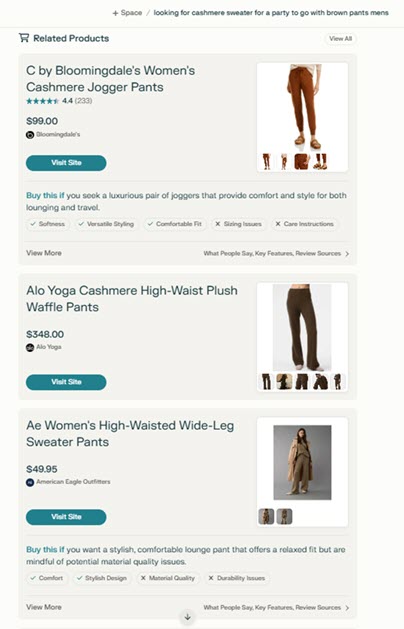
We started a new interaction with the identical prompt. This time, we received brown sweater suggestions, which is closer (do people wear brown sweaters with brown pants? maybe…), but still all women’s styles, while our user profile is configured as a male. So we should be receiving suggestions for men’s sweaters. Again, there were no Buy with Pro options, but we did find a Buy with Shop Pay option this time. Clicking the button brings the user to the Seller’s Shopify store directly to the checkout page to complete the purchase outside the Perplexity environment.
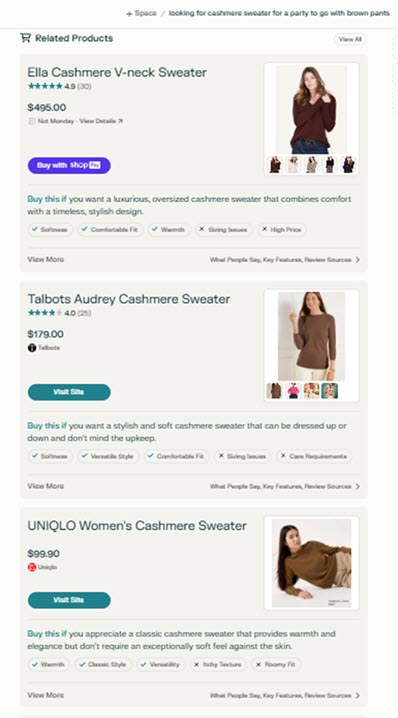
Looking for a New 3PL? Start with this Free RFP Template
Cut weeks off your selection process. Avoid pitfalls. Get the only 3PL RFP checklist built for ecommerce brands, absolutely free.
Get My Free 3PL RFPOn the third attempt, we appended the word ‘mens’ to the end of the prompt. This time, the results were mostly what we would expect, besides disagreement about what color sweaters would go with brown pants, though there was still no Buy with Pro option.
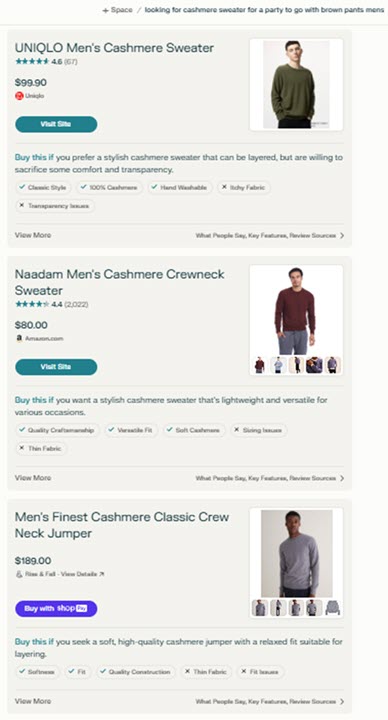
Perplexity Missed the Mark
While this use case for GenAI seems to be a natural fit for GenAI technology, it’s missing the mark. Search results were poor in our tests, suggesting product-market fit might be a long way away. The current solution lacks enough data or the needed intelligence or context.
We’re optimistic about the future of this technology, but in our limited trial/quick test, we weren’t impressed. Generative AI should be able to understand our profile and what we’re looking for and return a men’s sweater and not pants.
Scaling Made Easy: Calis Books’ Fulfillment Journey
Learn how Calis Books expanded nationwide, reduced errors, grew sales while cutting headcount, and saved BIG with Cahoot
See Scale JourneyIt Ain’t All Bad
While search results for the sweater didn’t deliver against expectations, the results did include some thoughtful suggestions about shades and tones to consider for different looks that the shopper might be interested in achieving, as well as tips for accessorizing the outfit:

So, there is promise, but is the product ready? We don’t think so. Again, it’s early, and this was our first couple of queries. But for paid Perplexity Pro users, that’s their first impression, and Shoppers will be disappointed, and Shoppers are very discerning.
Final Thoughts on Perplexity
Perplexity is still a young startup and may figure it out. But trying to compete with the OpenAI’s of the world and launching products prematurely may be a bad idea.
Whether expanding from the Shopify partnership to increase the scale of Buy with Pro or working on understanding the queries better and returning better results, the next move should be figuring out and bridging the gaps. In the era of AI, capturing interest and early users for only $20/month is the easy part. Keeping them, not so much. You can also listen to a recent Perpelixty AI Commerce Search podcast here .

Turn Returns Into New Revenue

Turning Today’s Smart Shoppers into Loyal Customers
When you ring up a sale with a brand new customer, whether online or in a store, is that the end of the relationship? Or is it just the beginning? In her best-selling book “The Membership Economy,” Robbie Kellman Baxter makes a clear case for the latter. The economics are profound, as it costs 7x more to acquire a new customer than to earn a repeat visit.
Brand loyalty is the key to growth for almost all retail categories. Whether your business relies heavily on repeat visits (e.g. sports apparel stores) or on low frequency purchases (e.g. a wedding reception decorations retailer), brand loyalty matters. You’d love for that soccer aficionado to shop every season. And you’d love for a recent bride to recommend your store, whether online or brick & mortar, to her friends when the time comes.
You build loyalty through great shopping experiences and customer touch points. One hundred years ago, those experiences began in stores, through interactions with store associates. And they continued with ongoing personal relationships. People’s lives centered on relatively small geographic areas, and retailers learned about their customers in person. Today, we are a mobile society. Store associates aren’t lifetime employees, and loyal shoppers visit multiple locations of their favorite retailers, including online.
The proliferation of customer touch points during the past 20 years has been immense. Meanwhile, your ability to truly know your customers, and how they interact with you, has become near impossible. Consider a shopper who just walked into one of your stores. Imagine if store associates knew the answers to all of these questions:
- Did she do any research before walking in? What products was she browsing?
- Has he shopped here previously? What did he buy and what brands does he like most?
- How happy was she with her last purchase here? Has she returned anything?
- Has he purchased from us online? Was it from our site? Or from a marketplace?
- Does she talk about our category, or about us, on social media?
- Have we interacted with him after the sale? Live chat? Contact Center? Chat bots?
Slash Your Fulfillment Costs by Up to 30%
Cut shipping expenses by 30% and boost profit with Cahoot's AI-optimized fulfillment services and modern tech —no overheads and no humans required!
I'm Interested in Saving Time and MoneyYour customer is capable of remembering all of it. And increasingly, as shoppers, they expect you to remember too — to know them across all the touch points they’ve experienced with you. And while technology is the driver behind channel proliferation, technology has not kept up with your need to know about all of those new types of interactions as your customers move from your site, to your store, to the telephone contact center. And back to the store again.
In this whitepaper, we will explore the challenges that retailers face in delivering omnichannel customer satisfaction as well as the solutions.
We will follow customers along the buyer journey.
How can you treat individual customers consistently, as if your brand truly knows them, regardless of whether they are on social media, buying on a marketplace, or in your store? And given that we can’t possibly know every single touch point, how can we, at a minimum, intelligently ensure that every interaction that customers have will be positive.
We will also, for many of the touchpoints within each step, cover the foundational capabilities you need in place, as well as those that will help you achieve omnichannel excellence.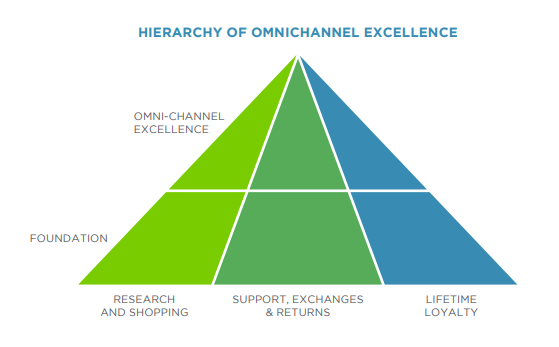
Customer Loyalty Building Blocks
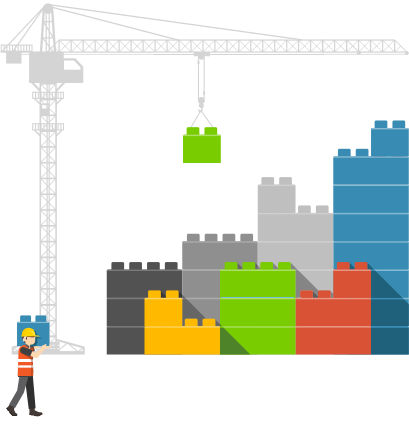
Intuitively, if you’re a retailer, you know that loyalty begins with the basics. Customers have needs, and they come to you to buy the products that will satisfy those needs.
- “I’m having a wedding, and I need party favors.”
- “Soccer season begins in 3 weeks, and I need practice gear.”
- “We’re headed to Mexico for the winter holiday, and I need SPF 30 swimwear.”
Looking for a New 3PL? Start with this Free RFP Template
Cut weeks off your selection process. Avoid pitfalls. Get the only 3PL RFP checklist built for ecommerce brands, absolutely free.
Get My Free 3PL RFPThe Basics
As a retailer, you help shoppers find the products that will make them happy, and you make the purchase process as easy as possible. You deliver where and when you promised you would. And, if your new customer has questions, or wants to return or exchange a product, you answer their questions quickly and make returns and exchanges simple too. You might even go a step further, with a basic loyalty program that rewards purchases.
Except, the basics aren’t simple anymore, because at every step of the buyer journey, customers are not just changing lanes on the highway, they’re switching from planes, to trains to automobiles… to SpaceX (see figure 1).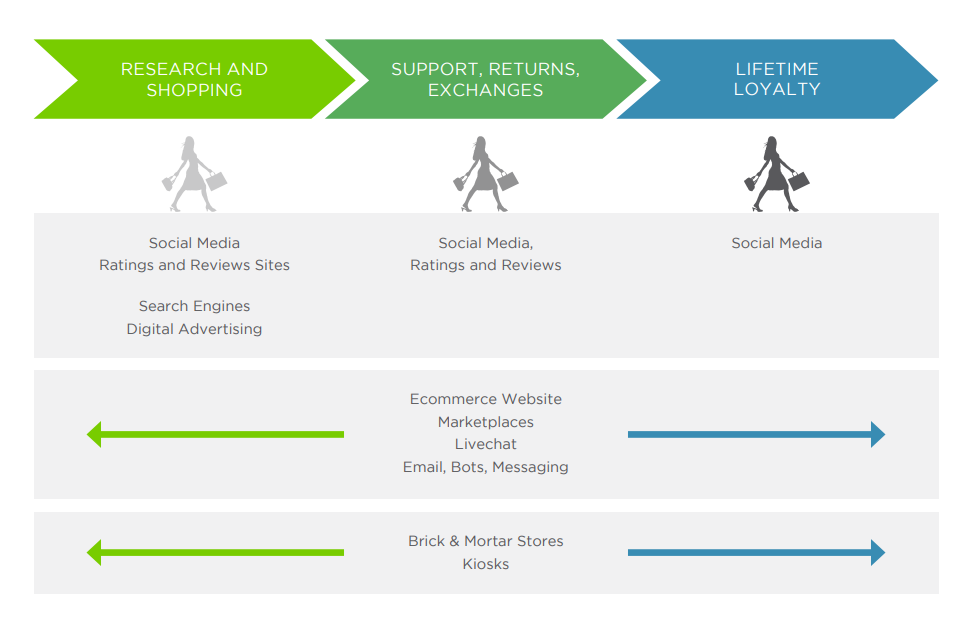
Shopping and Research
To serve your well-informed customers better, you need to know what they know. Before entering the store, what did they learn from google searches, reviews, twitter and your Facebook page? How does pricing and return policy vary between your ecommerce site, marketplaces, and your stores? Are your contact centers giving the same answers to the same questions as your live chat operators and your store associates?
Support, Returns & Exchanges
Return and exchange policy and execution are two of the most important factors consumers consider when choosing a retailer – whether buying online or in stores. In fact, according to the UPS Pulse of the Online Shopper™ study, 66% of shoppers review a retailer’s return policy before making a purchase. At a minimum, this must be a simple process. More advanced retailers are enabling customers to buy, modify an order, return and exchange across multiple contact channels. The easier we make it for customers, the more likely they are to return.
- Are each of your channels providing great support?
- Are they able to interact with a customer the same across all channels?
- Or is your company treating one customer like three:(1) the store customer, (2) the website customer, and(3) the call center customer?
Lifetime Loyalty
Loyalty programs are everywhere we turn. From buy 10, get 1 free punch cards, to rewards points, to discounts off the next purchase, retailers are in an arms race to keep customers coming back. And loyalty programs help you get to know your customers better too. Are you keeping your customers engaged with your brand after they walk out with their first purchase?
Scaling Made Easy: Calis Books’ Fulfillment Journey
Learn how Calis Books expanded nationwide, reduced errors, grew sales while cutting headcount, and saved BIG with Cahoot
See Scale JourneyThe Basics Matter
While there are a myriad of initiatives within each loyalty driver that we can enhance, retailers ignore the basics at their peril:
- 89% of customers have stopped buying from online stores after they’ve experienced poor service (source: Right Now)
- A 5% reduction in customer abandonment rate can increase profitability by 25% – 125%. (Source: “Leading on the Edge ofChaos,” Murphy & Murphy)

Turn Returns Into New Revenue


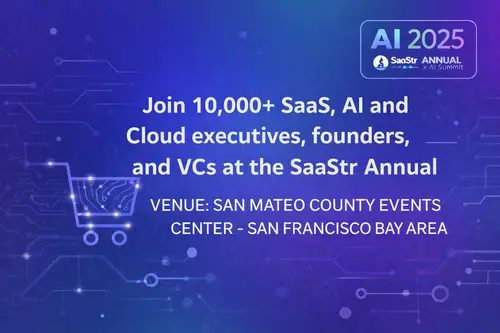
 1 minute
1 minute
